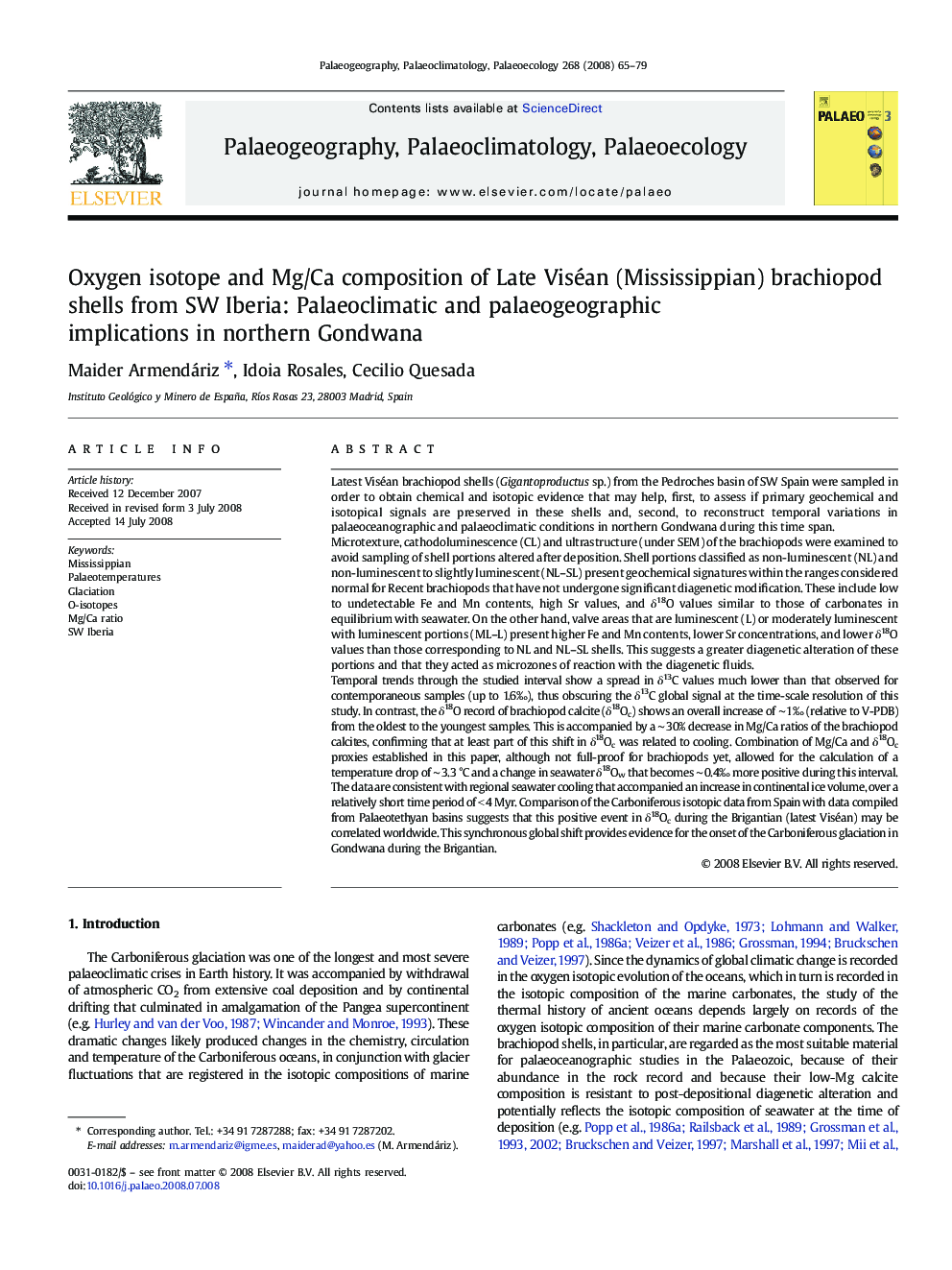| کد مقاله | کد نشریه | سال انتشار | مقاله انگلیسی | نسخه تمام متن |
|---|---|---|---|---|
| 4468415 | 1622318 | 2008 | 15 صفحه PDF | دانلود رایگان |

Latest Viséan brachiopod shells (Gigantoproductus sp.) from the Pedroches basin of SW Spain were sampled in order to obtain chemical and isotopic evidence that may help, first, to assess if primary geochemical and isotopical signals are preserved in these shells and, second, to reconstruct temporal variations in palaeoceanographic and palaeoclimatic conditions in northern Gondwana during this time span.Microtexture, cathodoluminescence (CL) and ultrastructure (under SEM) of the brachiopods were examined to avoid sampling of shell portions altered after deposition. Shell portions classified as non-luminescent (NL) and non-luminescent to slightly luminescent (NL–SL) present geochemical signatures within the ranges considered normal for Recent brachiopods that have not undergone significant diagenetic modification. These include low to undetectable Fe and Mn contents, high Sr values, and δ18O values similar to those of carbonates in equilibrium with seawater. On the other hand, valve areas that are luminescent (L) or moderately luminescent with luminescent portions (ML–L) present higher Fe and Mn contents, lower Sr concentrations, and lower δ18O values than those corresponding to NL and NL–SL shells. This suggests a greater diagenetic alteration of these portions and that they acted as microzones of reaction with the diagenetic fluids.Temporal trends through the studied interval show a spread in δ13C values much lower than that observed for contemporaneous samples (up to 1.6‰), thus obscuring the δ13C global signal at the time-scale resolution of this study. In contrast, the δ18O record of brachiopod calcite (δ18Oc) shows an overall increase of ∼ 1‰ (relative to V-PDB) from the oldest to the youngest samples. This is accompanied by a ∼ 30% decrease in Mg/Ca ratios of the brachiopod calcites, confirming that at least part of this shift in δ18Oc was related to cooling. Combination of Mg/Ca and δ18Oc proxies established in this paper, although not full-proof for brachiopods yet, allowed for the calculation of a temperature drop of ∼ 3.3 °C and a change in seawater δ18Ow that becomes ∼ 0.4‰ more positive during this interval. The data are consistent with regional seawater cooling that accompanied an increase in continental ice volume, over a relatively short time period of < 4 Myr. Comparison of the Carboniferous isotopic data from Spain with data compiled from Palaeotethyan basins suggests that this positive event in δ18Oc during the Brigantian (latest Viséan) may be correlated worldwide. This synchronous global shift provides evidence for the onset of the Carboniferous glaciation in Gondwana during the Brigantian.
Journal: Palaeogeography, Palaeoclimatology, Palaeoecology - Volume 268, Issues 1–2, 10 October 2008, Pages 65–79